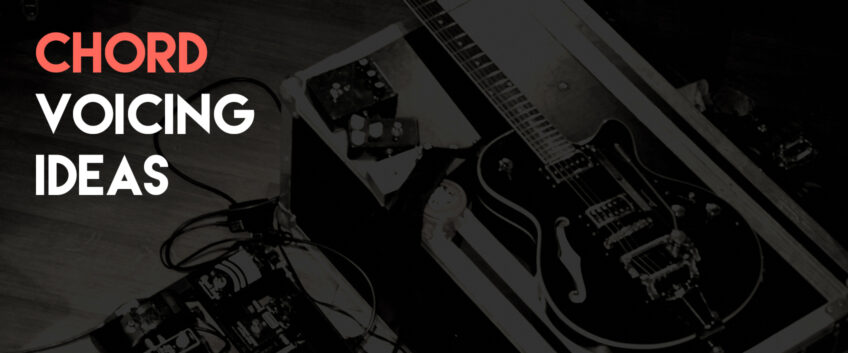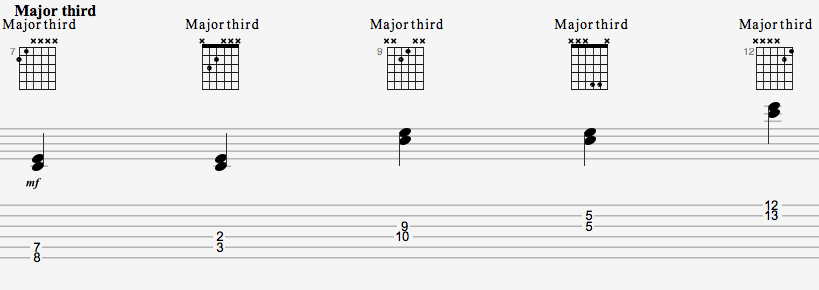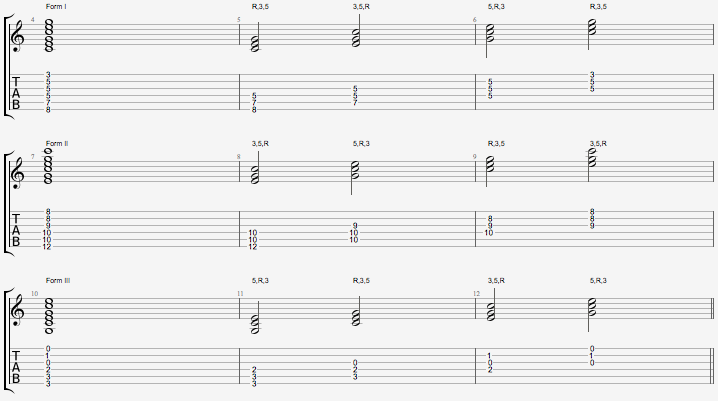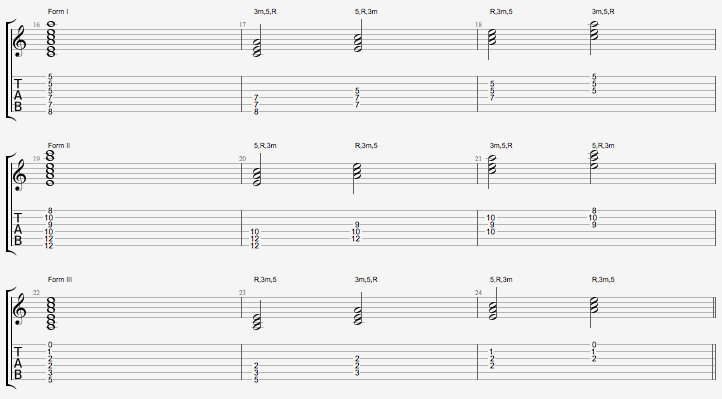
Fresh ways to come up with new chord voicing ideas on guitar
Today, I propose you to expand your knowledge of the guitar fretboard with major and minor triads.
Let’s start by remembering what these triads consist of:
Starting from a reference note called the root, we will add two other notes: a major third in the case of a major triad (2 tones above the root) or a minor third in the case of a minor triad (1 and a half tones above the root). A perfect fifth (3 and a half tones above the root), whether the triad is major or minor.
One of the keys to a good knowledge of the fretboard is to be able to situate the root on each string. This will be the reference which the other intervals will revolve around. If you are not familiar with this I suggest you practice daily taking random notes and situating them everywhere on the fretboard.
Once you have located the root on the fretboard, let’s see where the other two intervals are situated. To simplify things we will locate only the thirds which are situated on the string that is adjacent to the root. You will notice that the location is always the same, except for the G and B strings.
The minor third being located 1/2 tone before the major third, you will naturally find it one fret before the major third on the fretboard in relation to the same root. Whatever note you start with (a C here) these intervals will always be located in the same place in relation to the root.
You are probably familiar with the interval of the fifth thanks to power chords:
However, in the exercise that I propose the third has already taken the position on the adjacent string for the construction of our triad, so we’ll have to find another position on the string above:
Train yourself to situate these intervals of thirds and fifths if you are not used to it. You will learn them very quickly and it will be extremely useful in the future!
Now let’s build a major triad. We will simply follow the order of root, major third and fifth, in cycles, so as to cover the 6 strings of the guitar. Thus we obtain three shapes which will cover the fretboard.
Here is shape I:
The aim here is not to play all the notes of this shape at the same time but to identify the intervals that constitute it. Maybe you have noticed that in this shape we find a good part of the position of the well-known C chord:
Here is shape II:
Again we find here a good part of the C chord:
And shape III:
In which we can recognize this usual position of the chord:
From these shapes we will extract what I will call “mini-positions” of triads, simple groups of three adjacent notes. This time the lowest note will not necessarily be the root, but the order of appearance of intervals (root, third, fifth, root, third, fifth, etc.) is always the same.
These mini-positions are very useful, whether it is to build riffs, improvise or for a leaner accompaniment than with extended positions.
Here is the minor form:
To help you, don’t forget that these mini-positions are located in chord positions that you probably already know – we’re just extracting the essential elements. Always locate where the intervals that make up these triads are located, whether they are on a string below the root or above.
To put this all into practice, let’s manipulate these mini-positions with some well-known chord progressions and a few simple constraints.
Here’s a first chord progression:
The exercise consists of taking a random mini-position for the first chord and then applying one of the following three constraints:
– Go down to the nearest mini-position of the next chord.
– Go up to the nearest mini-position of the next chord.
– Use the mini-position of the next chord that will enable you to remain as close as possible to the previous position.
Example 1: Descending progression
Example 2: Ascending progression
Chord progression II:
Example 3: Close positions
Example 4: Descending progression
Chord progression III:
Example 5: Descending progression
Even if it can seem laborious in the beginning, you’ll see that with a little practice you will learn to situate your intervals and chord positions better. This work will give you a very solid basis for the construction of more complex chords and inversions. Use the chord progressions of your favorite tunes and vary the starting positions, fretboard positions and keys.
Christophe Maerten, artistic advisor at Guitar Pro
Leave a comment
Your email address will not be published.
























2 Comments
Pretty useful ….thanks
Glad you enjoyed it Stefano 😉